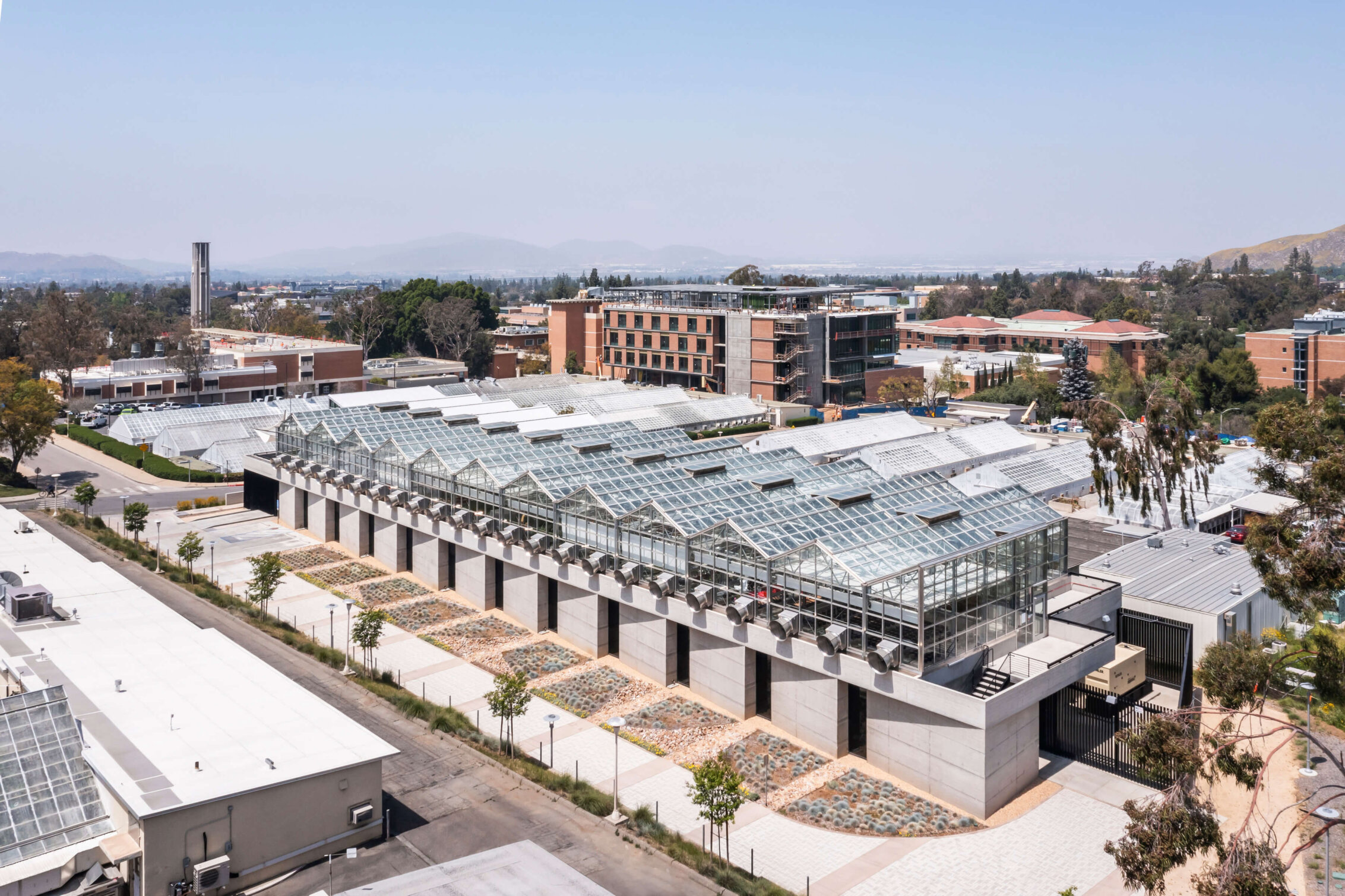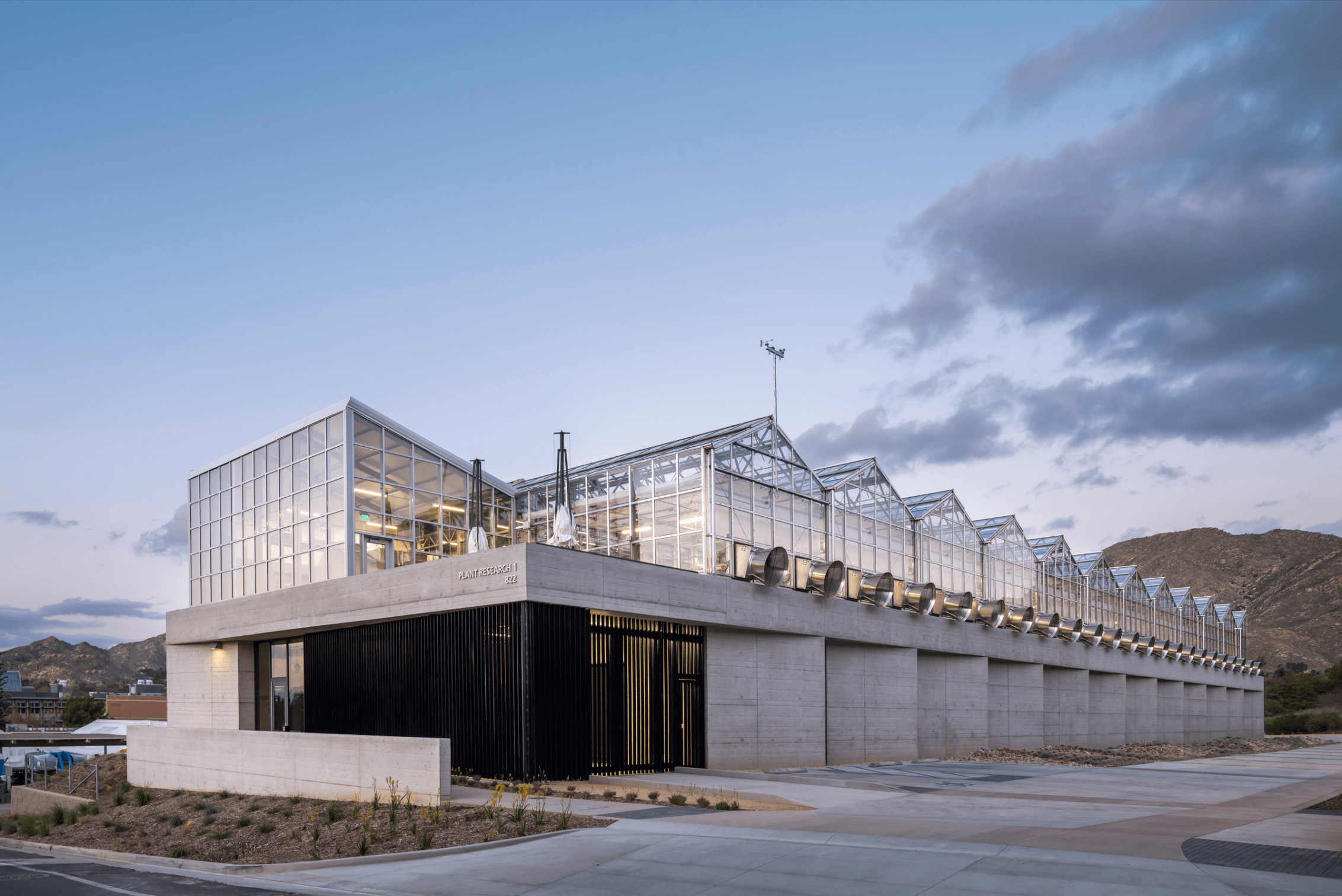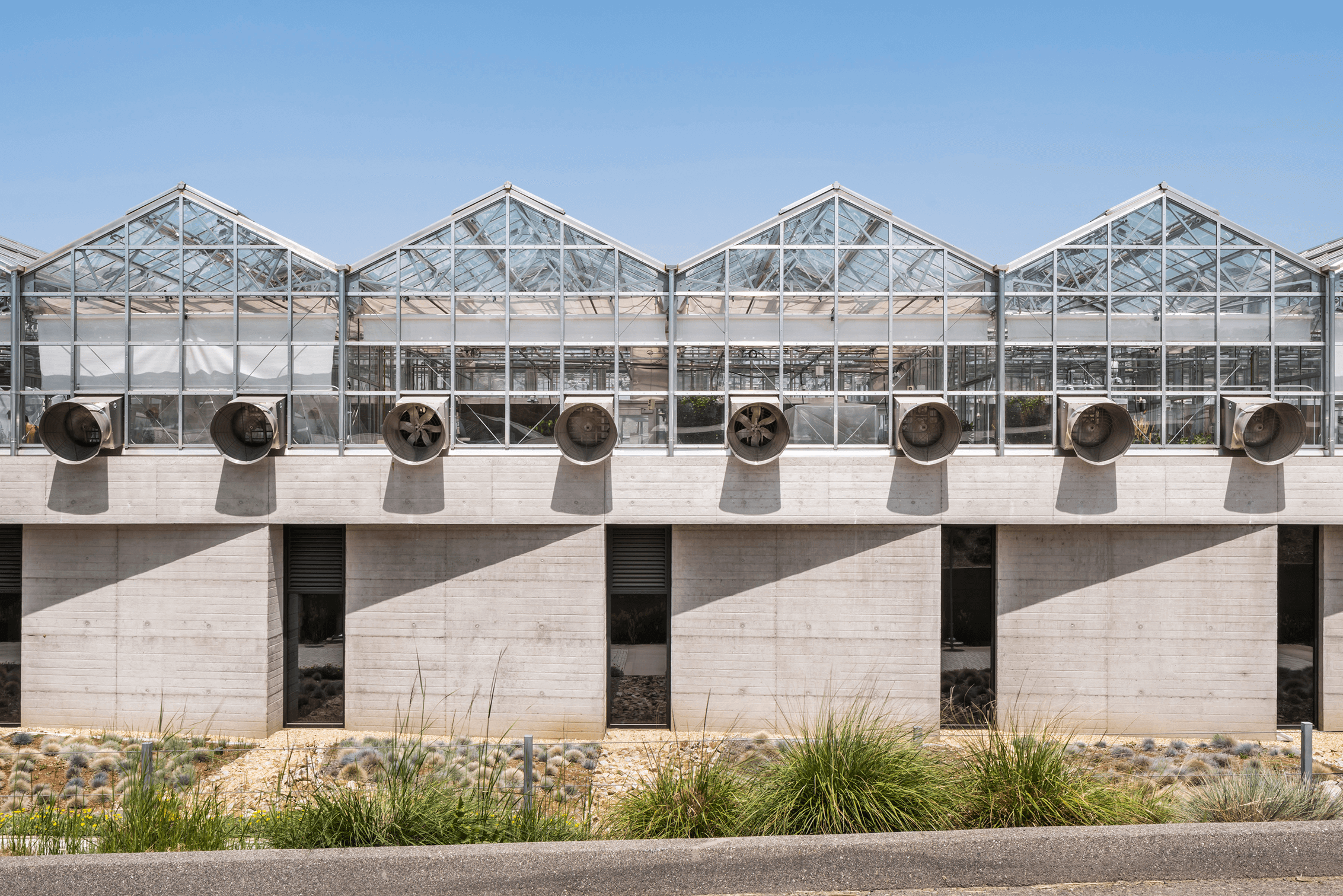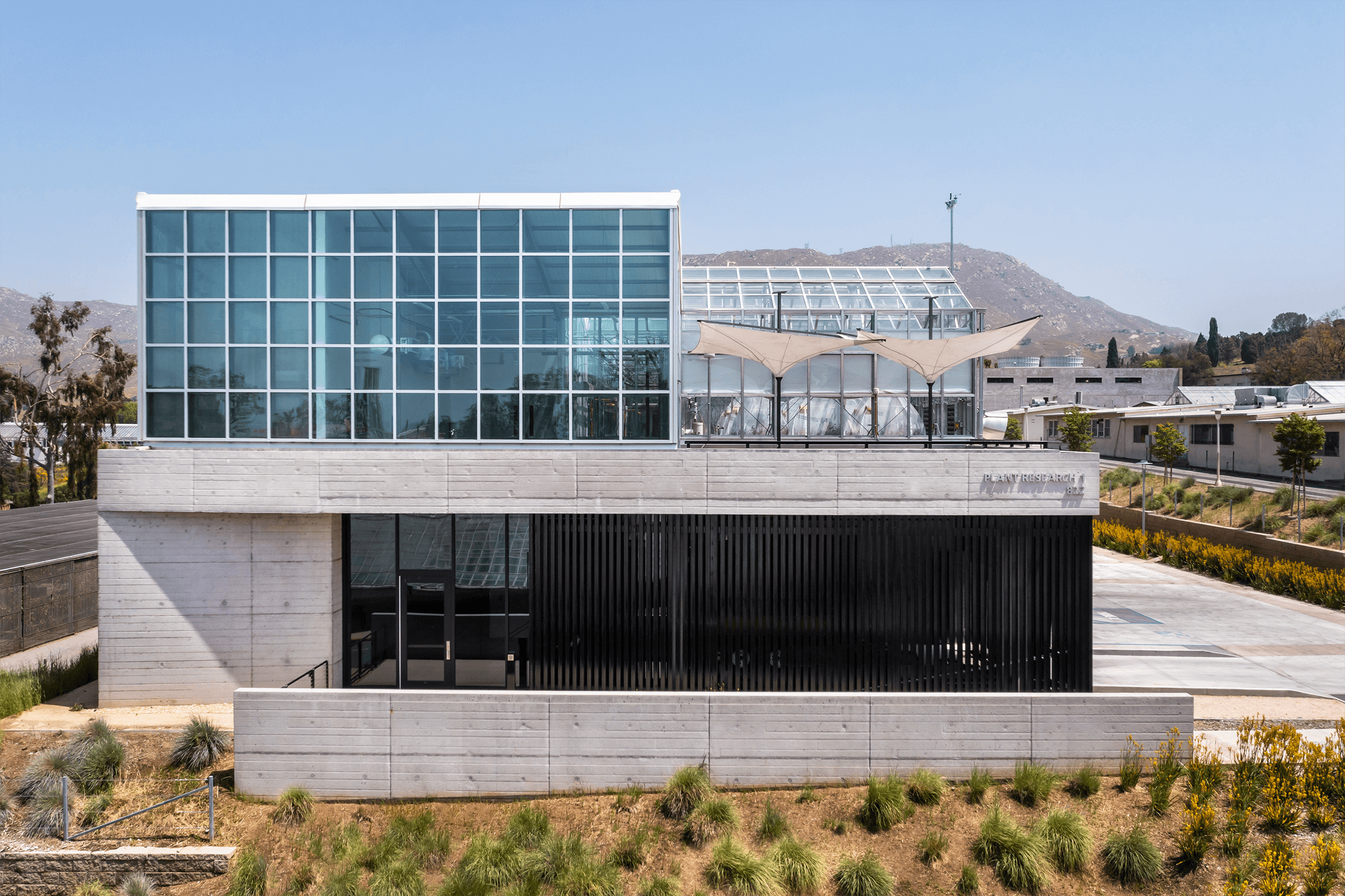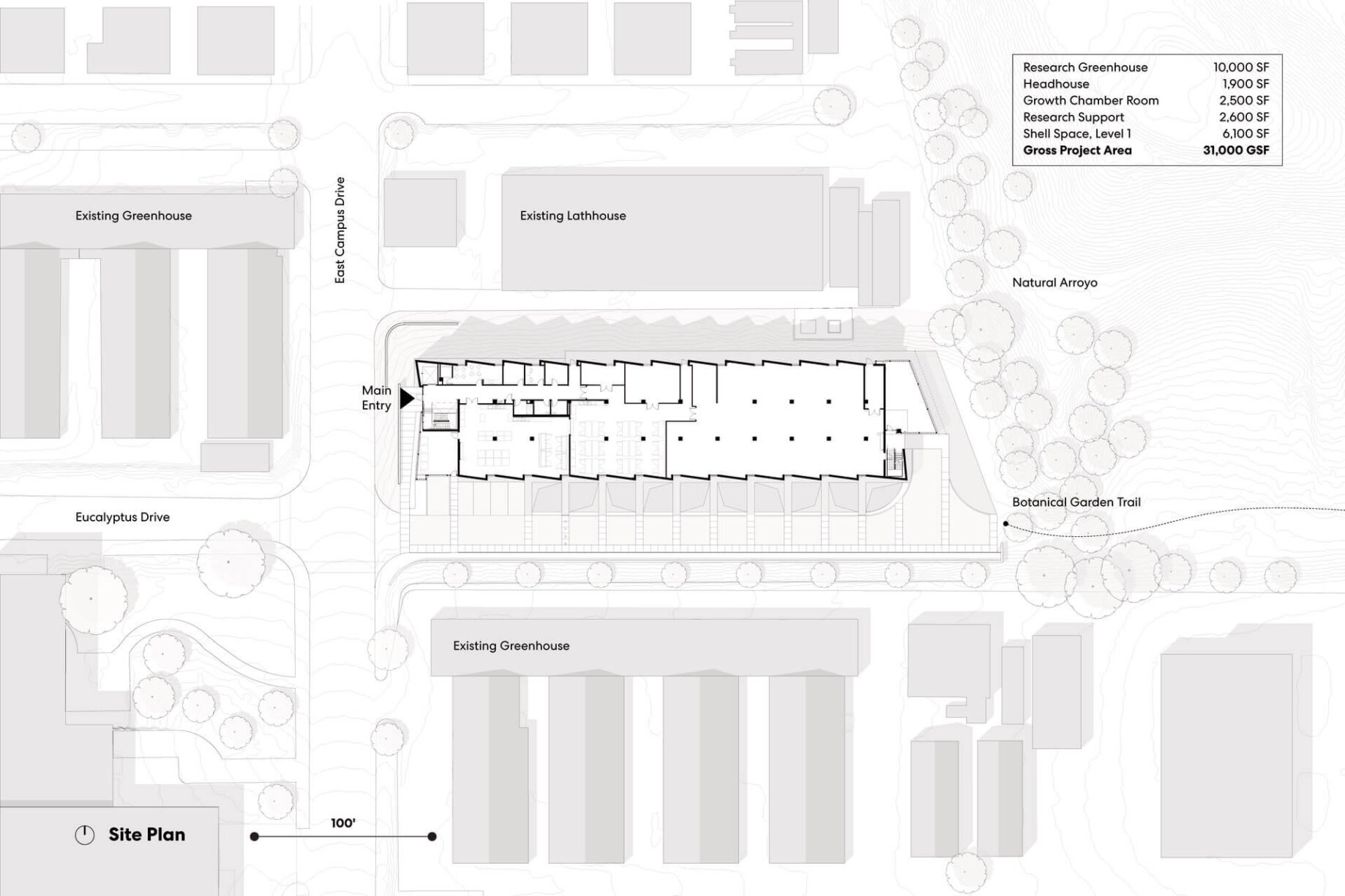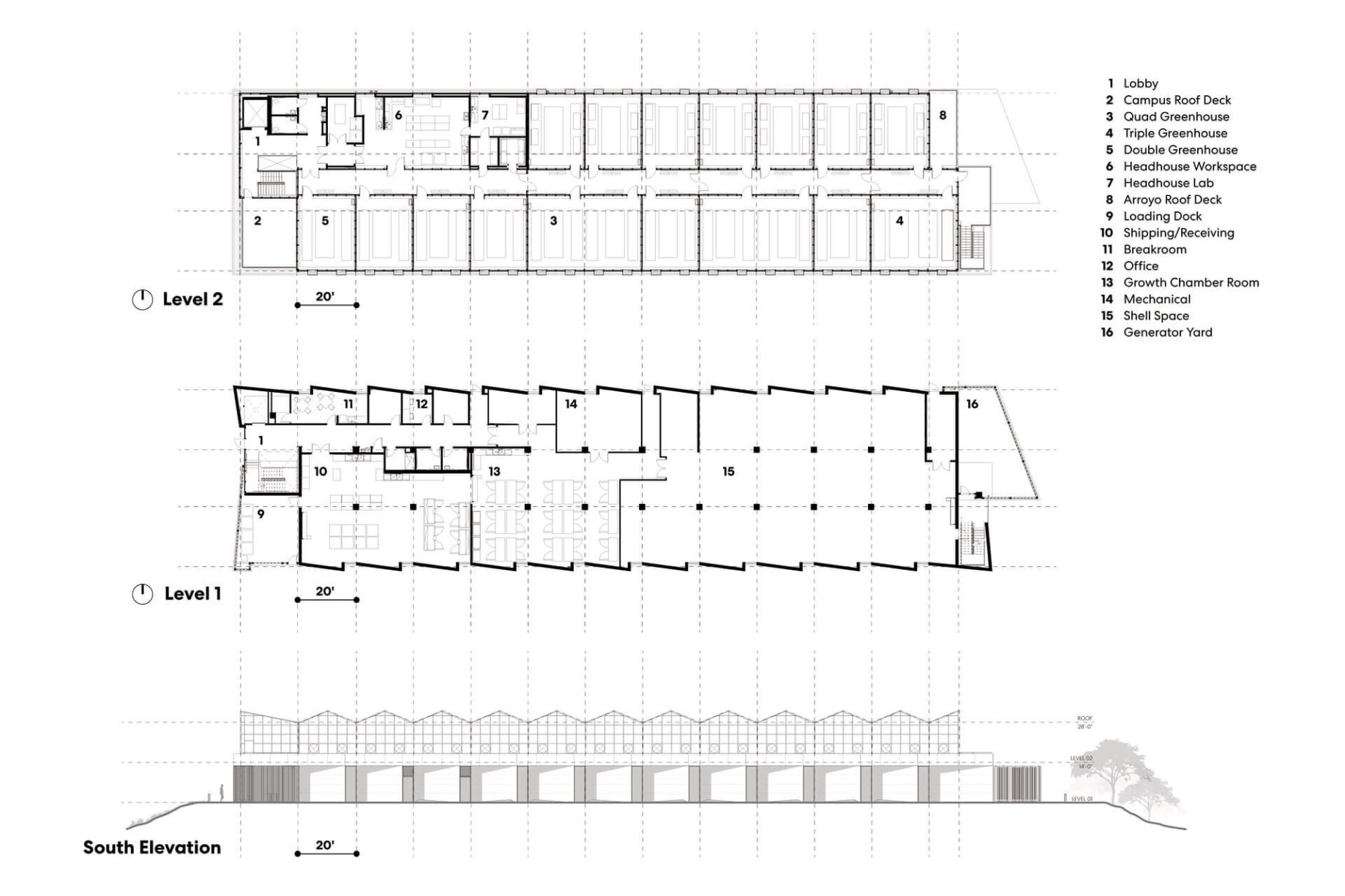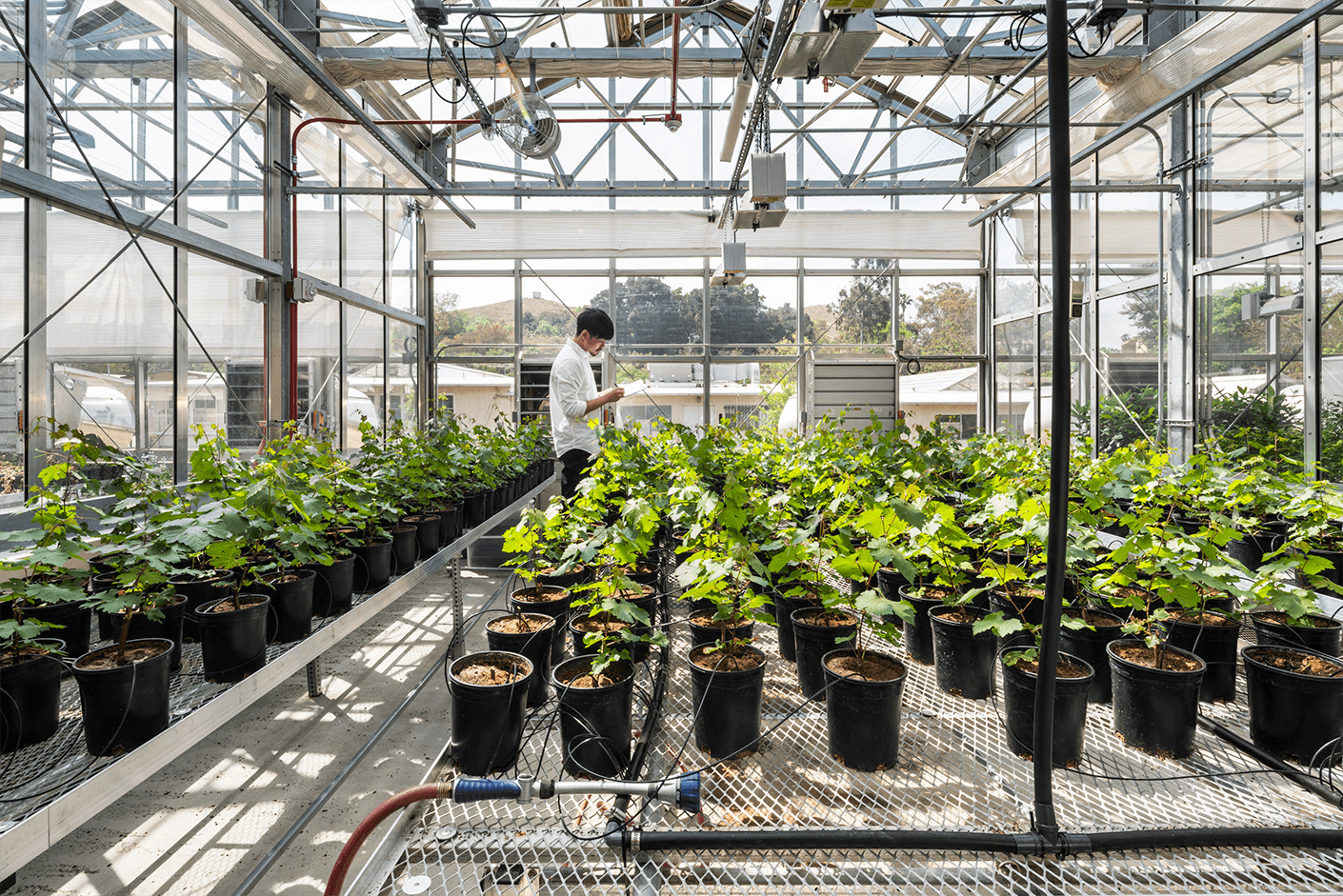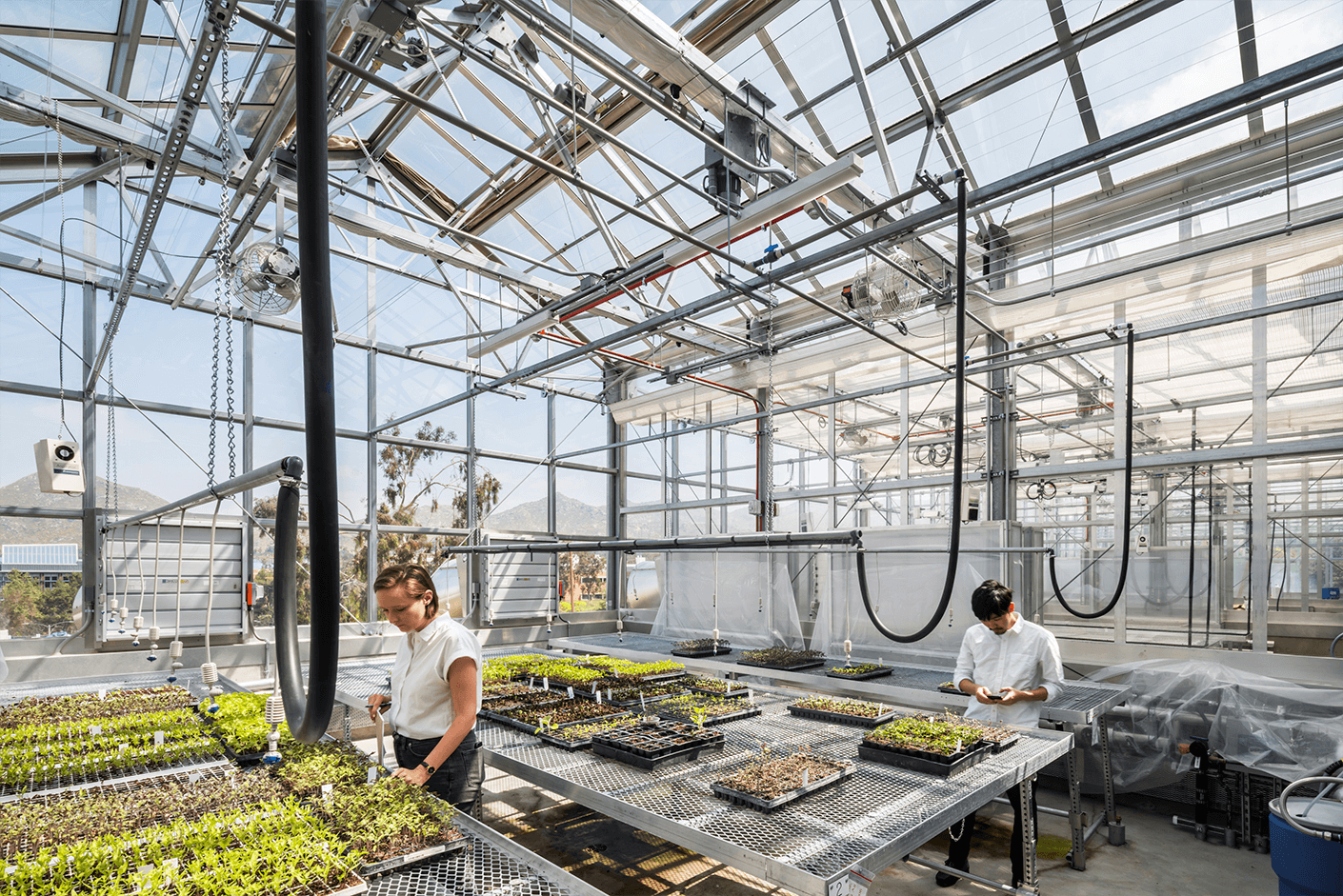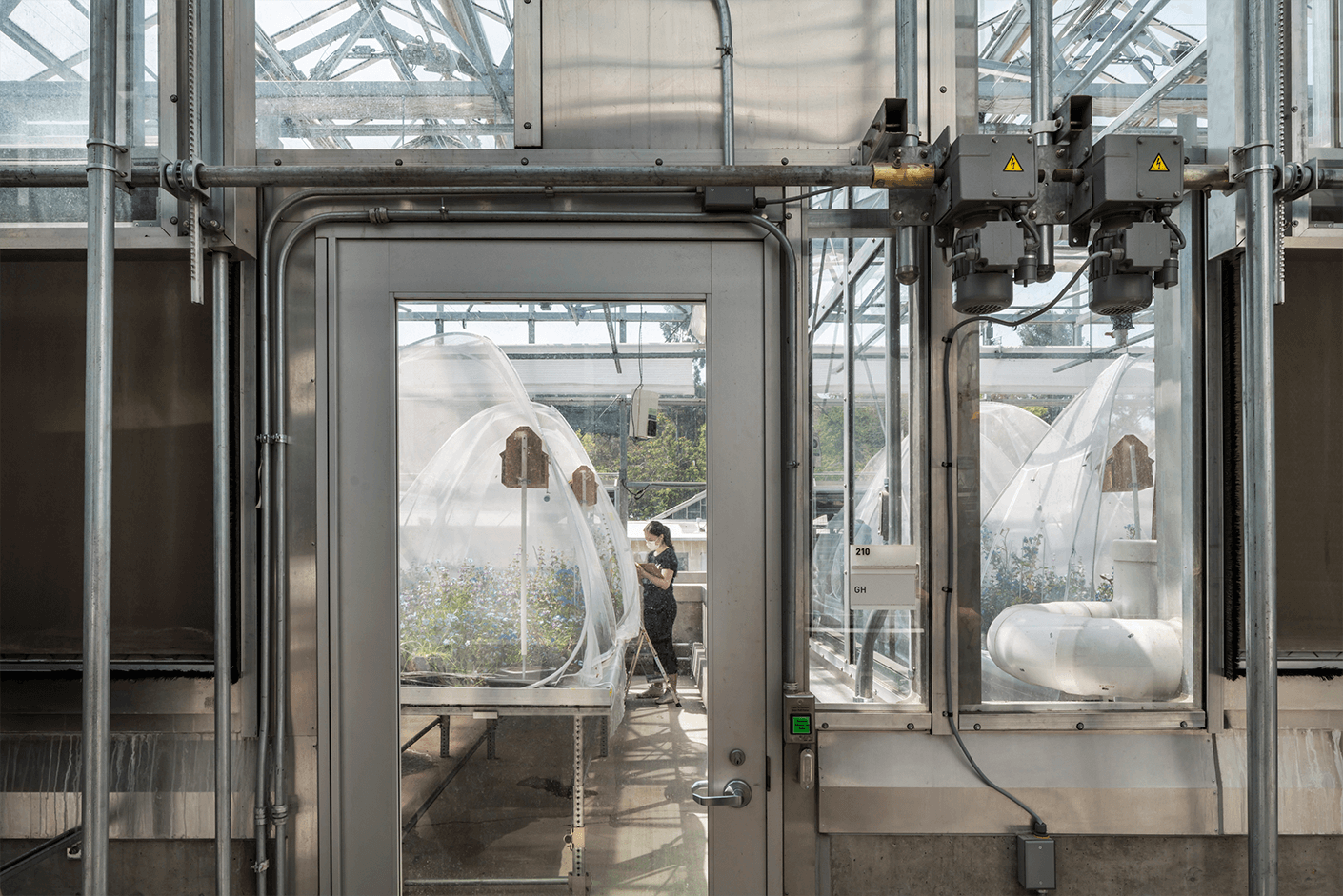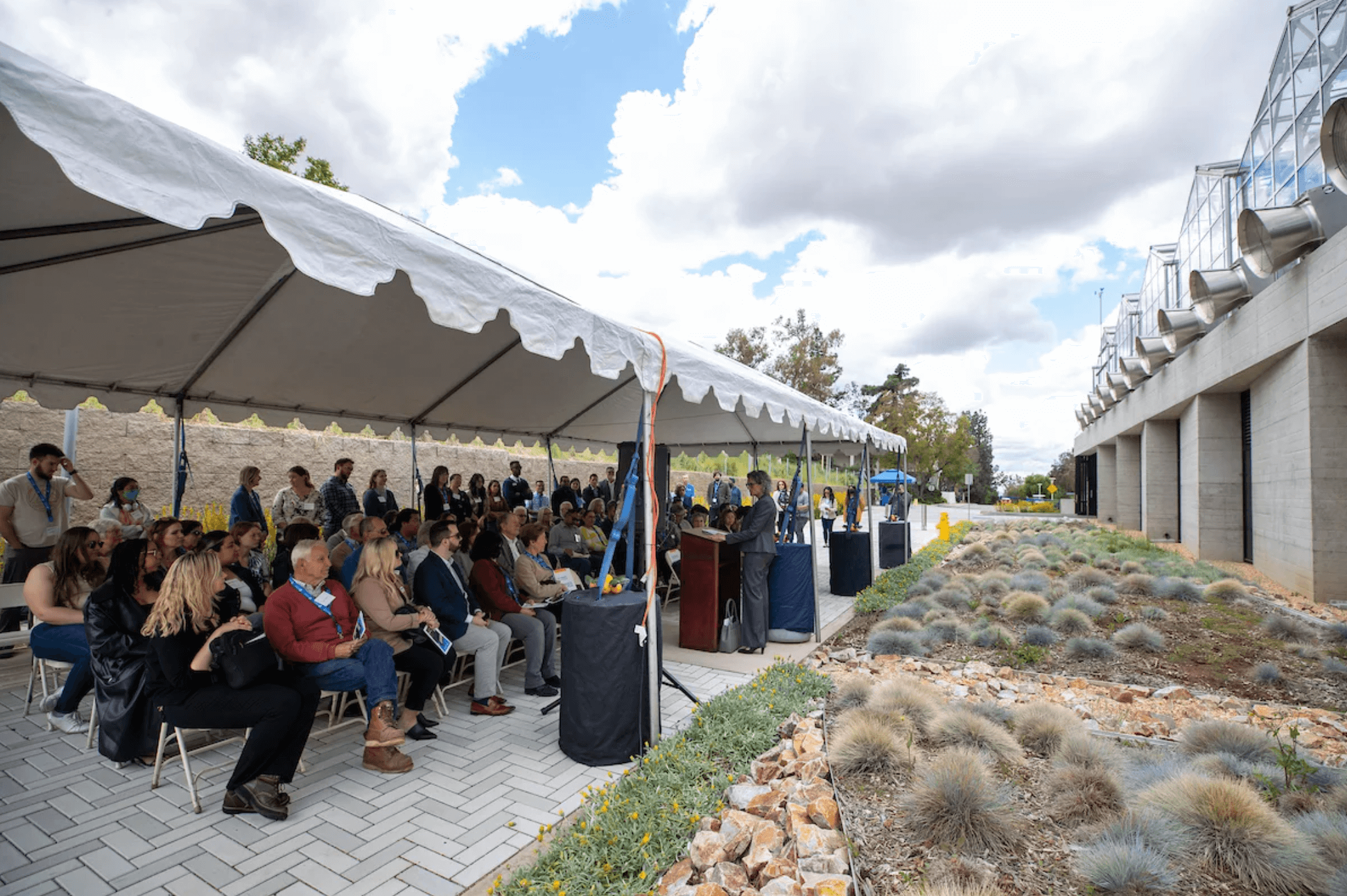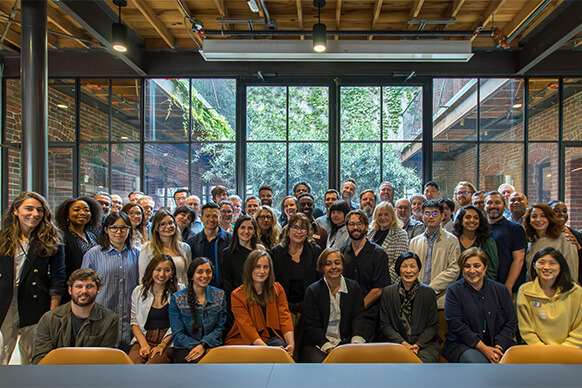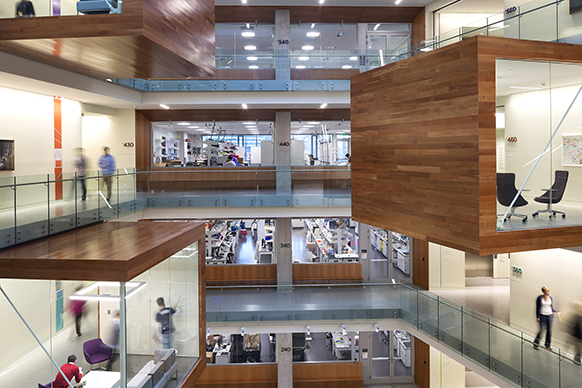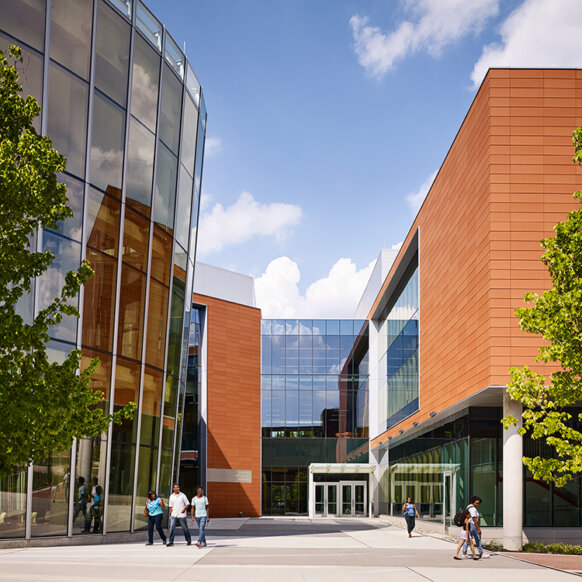RIVERSIDE, California—The University of California, Riverside’s College of Natural and Agricultural Sciences (CNAS) has opened a new plant research facility, ushering in a new era of scientific development and innovation for the institution. Perkins&Will’s Los Angeles studio led the award-winning design of the two-story, 30,000-square-foot greenhouse facility, which equips the college with best-in-class agricultural research technology, enabling researchers to conduct studies previously unattainable at the university.
“This greenhouse gives us a much higher control in terms of temperature, humidity, and light,” says Julia Bailey-Serres, a distinguished professor of genetics and director of the Center for Plant Cell Biology. “We have this incredible ability to grow all year round.”
